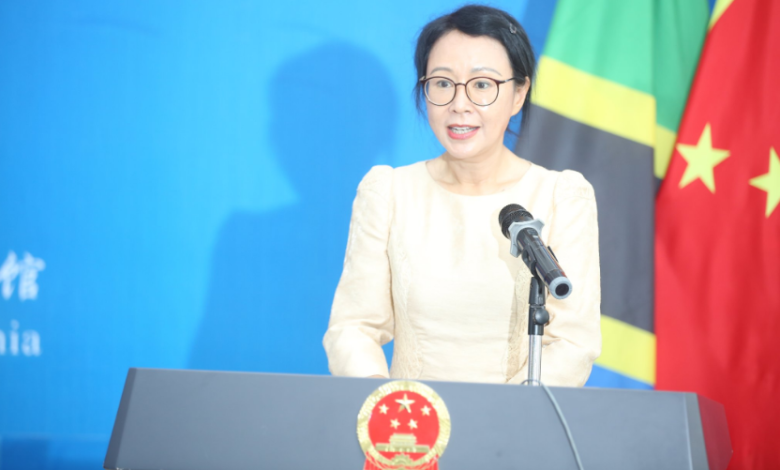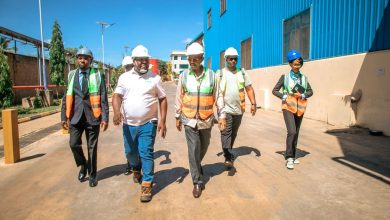Blueprint and baton drive China’s governance success

DAR ES SALAAM: THE Fourth Plenary Session of the 20th Central Committee of the Communist Party of China (CPC) was successfully convened not long ago. One of the most important achievements is the adoption of the Recommendations of the CPC Central Committee for Formulating the 15th Five-Year Plan for National Economic and Social Development, which conveyed to the world the signal of stability of China’s policies, economic growth and development expectations. It shows China’s determination to follow through with its blueprint of development, which reveals the success code of China’s governance.
An important method of CPC’s governance is to soundly formulate and continuously implement FiveYear Plans, which is also a huge political advantage of socialism with Chinese characteristics. The Five-Year Plan strategy was neither invented by nor unique to China, yet China has been the one to uphold it most consistently and scored remarkable development. China has achieved tremendous transformation from standing up and growing prosperous to becoming strong. From the first Five-Year Plan formulated in 1953 to the 14th Five-Year Plan in 2021, the Chinese government has pursued a consistent theme of building China into a modern socialist country. Yet, socialist modernisation can only be realised through a historical process of gradual and ongoing development. Like running a great race, it requires one generation after another to carry the relay baton forward, with every stage striving to achieve solid results.
From the First to the Fifth Five-Year Plan, New China transformed its impoverished and underdeveloped conditions and built an independent and relatively complete industrial system and national economic framework. After the launch of reform and opening up, from the Sixth to the Thirteenth FiveYear Plan, China achieved the goal of building a moderately prosperous society in all respects, which is its first centenary goal. In 2017, the report of the 19th National Congress of the CPC laid out a two-step strategy for achieving the second centenary goal: The first step is to use three Five-Year Plans to basically realise socialist modernisation by 2035. On this basis, the second step is to use another three FiveYear Plans to build China into a great modern socialist country by the middle of this century.
During the 14th FiveYear Plan period (2021– 2025), China’s economic strength, scientific and technological strength, and overall national power have reached new heights. The country’s GDP is expected to reach around 140 trillion yuan (USD 19.7 trillion) this year, marking steady progress in advancing Chinesestyle modernisation. The period covered by the 15th Five-Year Plan will be critical in this process as we work to reinforce the foundations and push ahead on all fronts toward basically achieving socialist modernisation by 2035.
The Five-Year Plans have always taken the people’s aspiration for a better life as both the starting point and the ultimate goal. The people-centered philosophy of development runs through all aspects and the entire process, with people’s sense of gain, happiness and security serving as the core criteria for evaluation. As of today, China has established the world’s largest education system, social security system, healthcare system and urban housing system, with the world’s largest middle-income group. The 15th Five-Year Plan places a strong emphasis on the people’s position in its guiding principles and highlights the goal of achieving common prosperity for all.
In 1949 when the People’s Republic of China was founded, the per capita national income was only 27 US dollars, and 87 per cent of the population—mostly rural residents—lived in extreme poverty. Since China’s reform and opening up in 1978, China embarked on an unprecedented poverty reduction process in human history. Since the CPC’s 18th National Congress in 2012, the CPC Central Committee with Comrade Xi Jinping at its core has placed poverty alleviation as priority in governance agenda, and implemented targeted poverty alleviation strategy. By the end of 2020, all 98.99 million rural residents living under the existing poverty standard had been lifted out of poverty, enabling China to meet the poverty eradication target set out in the UN 2030 Agenda for Sustainable Development ten years ahead of schedule.
Centralised and unified leadership of the CPC Central Committee has played a decisive role in the formulation and implementation of the Five-Year Plans. The CPC exercises overall leadership over all areas of endeavour in every part of the country. For every Five-Year Plan, the CPC Central Committee will put forward recommendations for its formulation, outlining the guiding principles, major objectives and key tasks for economic and social development. During the formulation process, the CPC extensively solicits opinions from all sectors of society, ensuring that top-level design is integrated with input from the public. Public wisdom and suggestions are fully absorbed to build broad social consensus.
During the formulation of the 15th Five-Year Plan, General Secretary Xi Jinping personally presided over multiple symposiums to hear opinions from both within and outside the Party. Online platforms collected 3.113 million public submissions. During the plan’s revision stage, 452 suggestions from various sides were adopted, with an adoption rate of 21.4 per cent. This effectively captured the pressing concerns of the people and elevated public demands into national strategy.
In the process of implementing the Five-Year Plans, the CPC always provides overall leadership and coordinates the efforts of all involved. Each Five-Year Plan contains continuing indicators, adjusted indicators and newly added indicators, combining long-term strategic vision with medium-term flexibility. Under unified central planning, responsibilities are broken down at local levels and coordinated among government departments to mobilise nationwide efforts.
The advantage of longtermism that boasts both continuity and adaptability under the leadership of the CPC is unmatched by many other countries. As Nobel laureate in economics Robert Engle puts it, “While China formulates a Five-Year Plan for the next generation, the United States only plans for the next election.”
China has always been a member of the Global South and stands ready to share its experience and opportunities with other Global South members. China and Tanzania are comprehensive strategic cooperative partners, and China’s high-quality economic development continues to provide strong momentum for bilateral cooperation. China is expected to remain Tanzania’s largest trading partner for the tenth consecutive year and is also the largest source of foreign investment in Tanzania. Major projects undertaken by Chinese enterprises such as Lots 5 and 6 of the Standard Gauge Railway are progressing steadily and contributing significantly to Tanzania’s economic and social development.
The revitalisation project of the Tanzania–Zambia Railway Authority (TAZARA) Railway has officially been launched, and the Prosperity Belt of TAZARA Railway is gaining strong momentum. China stands ready to work with Tanzania to enhance the synergy between China’s 15th Five-Year Plan and Tanzania’s National Development Vision 2050, and deepen cooperation under frameworks such as the Forum on China–Africa Cooperation and the Belt and Road Initiative, so as to build bilateral relations into a model for China–Africa and Global South cooperation and contribute even more to building a community with a shared future for humanity.





